Photos taken by Kalina Sabala Montes (Yale University), Student Correspondent for CET Beijing, Summer 2025
The third week of CET Beijing, students were unable to hold back their excitement as they anticipated one of the most popular parts of the program—a five-day trip to Chengdu, the capital city of the Sichuan province in China. The beginning of the week was spent learning new vocabulary related to the current social climate of Chengdu, including the sudden rise in tourism due to the city’s relaxed lifestyle and famous attractions that make it a popular place to visit. Before arriving in Chengdu, we each selected topics that we were interested in as we were going to create and present a short video project on that topic at the end of the five days.
High Speed and Maglev Train
Our trip to Chengdu began bright and early as we all packed our suitcases and headed to the train station. Although the sun had just started to rise as we arrived, many of us were curious to experience what it was like to ride a high-speed train. The seven-hour train ride was mostly spent sleeping, since we had many activities to look forward to upon arriving in Chengdu, but the experience was fascinating. The speed of the train was displayed on a small screen as we traveled, and as I looked out the window, the blur of all the buildings demonstrated just how fast we were going, but the ride felt smooth and without interruption.
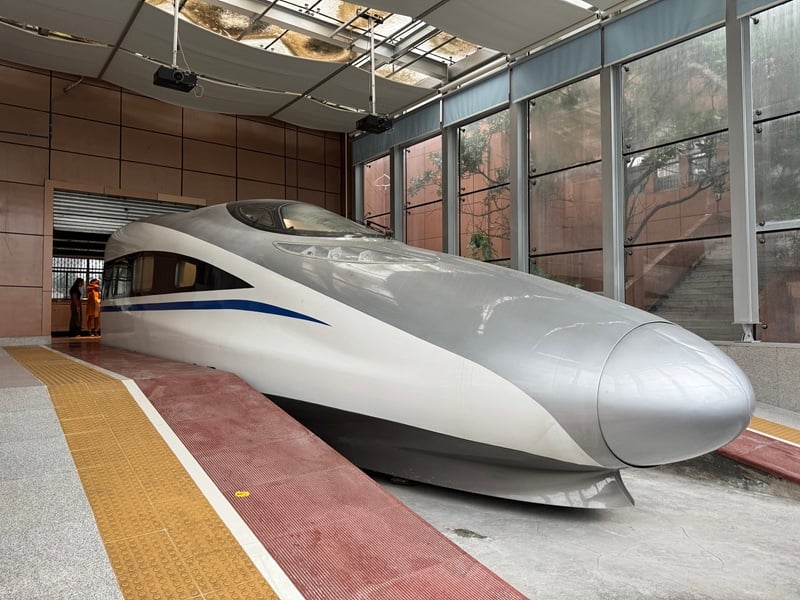
Upon arriving in Chengdu, we were greeted by the local students from Chengdu who we would be working with on our video projects and exploring the city with. We were also greeted by a torrent of rain, which chased us as we scrambled into our first activity in Chengdu—the high speed and maglev train laboratory at Southwest Jiaotong University.
We discussed with leading experts on the development of the high-speed train in China, and how scientists and engineers were beginning to research utilizing the principles of electromagnetism to create a faster train. The technology uses attractive and repulsive forces between electromagnets on the train and rail to life the train off the track. With this technology, maglev trains have the potential to reach up to 375 miles or 600 kilometers per hour, faster than any other existing train in the world.
Trying Málà Tàng
Afterwards, we joined our new friends from Chengdu to try Sichuan hot pot, also referred to as 麻辣烫 (málà tàng), which describes the numbing sensation that one experiences from the spices. Our classmates showed us what each ingredient was, how long was needed to cook them in the broth, and their own recommendations for what we should try.
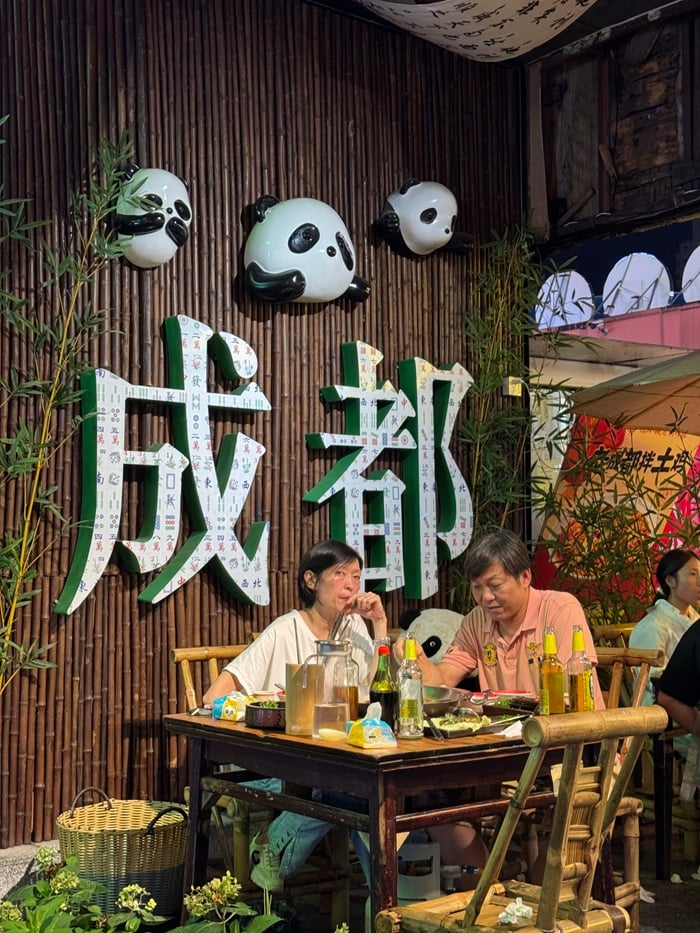
I approached the spicy broth with caution, as the spice in America does not compare to the spice in China, but I found that I really enjoyed the flavor. The spice was slightly numbing, but not painful, and the other ingredients in the broth elevated the flavor of the ingredients that were cooked in it as well. Once we finished eating, we explored the area around the restaurant and took some pictures against the skyline.
Chengdu’s Panda Base

The next day, we visited one of the most popular attractions in China, Chengdu’s Panda Base. There, we talked with a panda expert on the lifestyle and life cycle of a panda, their preferred environment and choice of food, and the efforts that the Chinese government has taken to protect pandas and their natural habitat. And of course, we couldn’t forget to take as many pictures as we could of the adorable pandas as they sprawled out on the floor, taking what looked like the most comfortable nap ever.
Duanjia Family Residence
For the second activity of the day, we arrived at the Duanjia Family Residence, an ancient courtyard that includes elements from the traditional residential style of western Sichuan. The walls were lined with drawings and poetry, and the interior displayed the typical rooms that would be included in a house in ancient China. Underneath the hot summer sun, we practiced tai chi, emulating the movements of our teachers as we followed along to their rhythm.
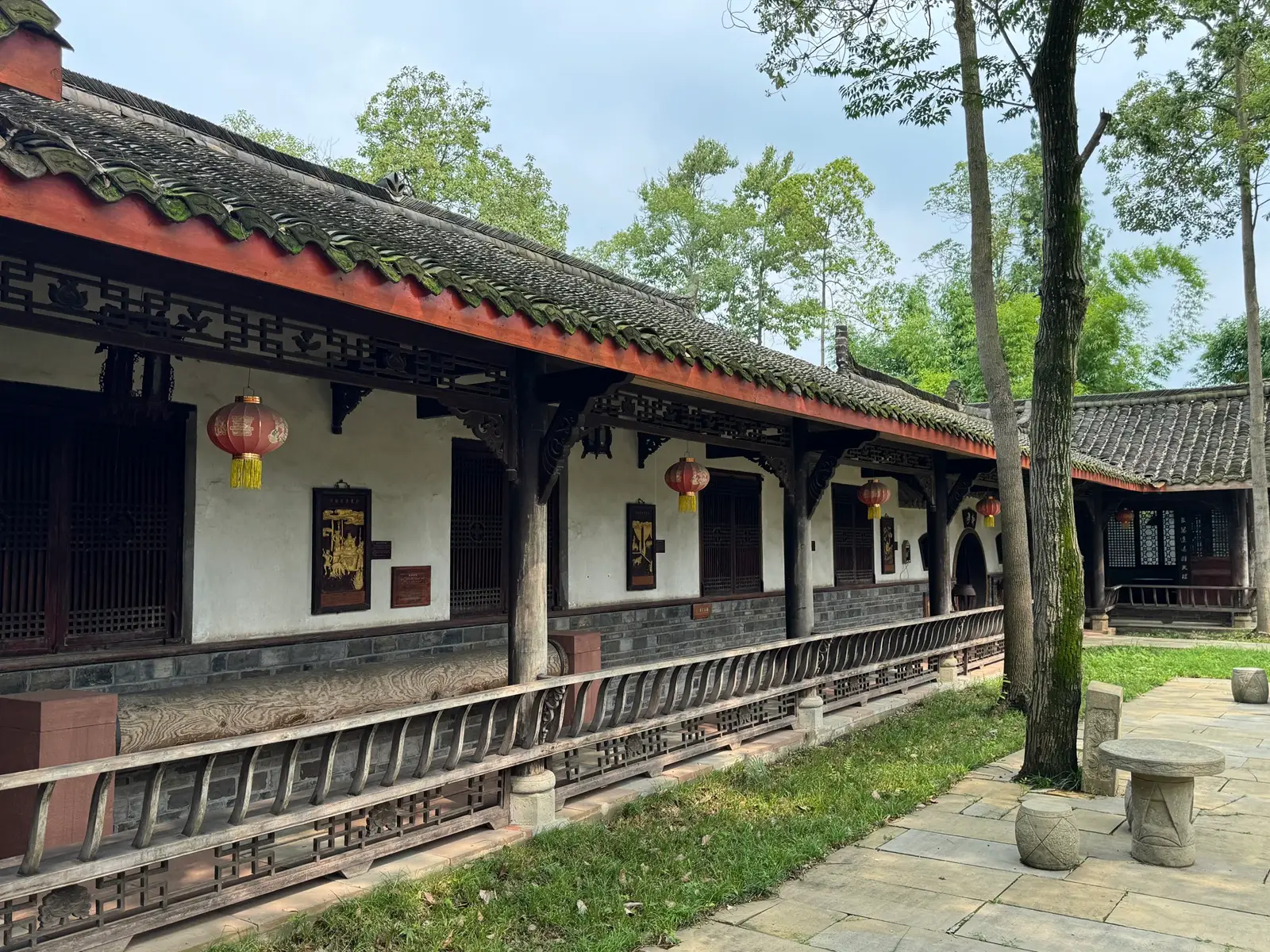
Before we departed for our next activity, we sat down to enjoy a long-spout tea kettle performance, a ritual invented during the Three Kingdoms Period to protect warlord Liu Bei as he drank tea. The performance draws from the movements of kung fu into a choreographed sequence of twirls and spins that ultimately concludes in a warm, inviting cup of tea.
Three Star Mound Museum

Lastly, we ended the night at the Three Star Mound Museum, where we learned about Sanxingdui (三星堆). We listened to a presentation by an expert on Bronze age culture that stemmed from Guanghan, Sichuan. The artifacts displayed at the museum consisted of various masks and structures that represented the various gods that were worshipped at the time, sourced from the archeological site that was discovered in 1986. Since this was one of the topics that I selected to work on for my video presentation, my group and I split up to take videos of the various artifacts and historical elements, as well as interview leading experts on the topic.
Traditional Chinese Medicine Museum
The main activities for our second day in Chengdu covered topics related to leisure life, self-care, and traditional Chinese medicine. In the morning, we visited the Traditional Chinese Medicine Museum, where we learned about traditional medicinal practices and the many different types of herbs and ingredients that were utilized in ancient Chinese culture.

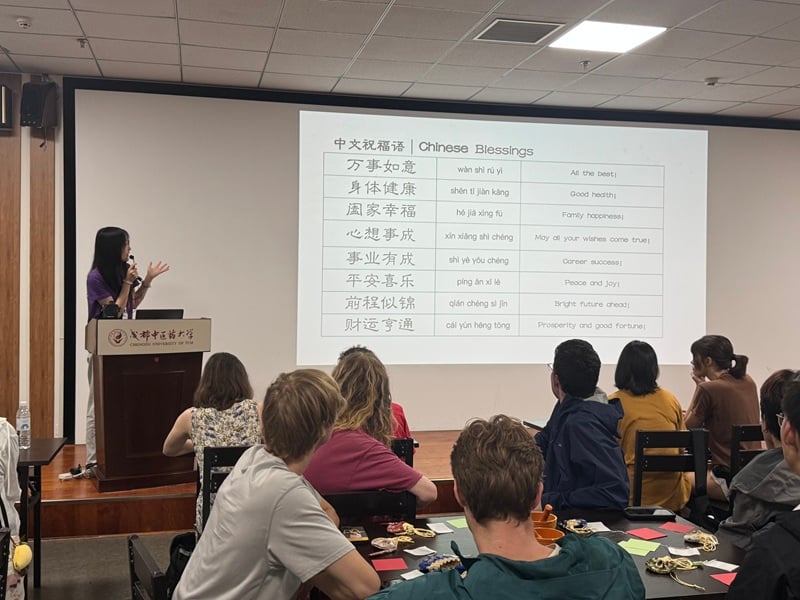
After touring the museum and learning about the significance and health benefits of the ingredients ancient Chinese doctors used, we got the chance to create our own medicinal herb pouch. Referred to in Chinese as 香包 (Xiāngbāo), these medicinal packets contain specific sets of herbs that are said to awaken consciousness, invigorate organs, repel mosquitoes, and avoid disease. We each picked out our ingredients according to their uses and scents and combined them into a bowl, where we spent most of our energy attempting to ground all the ingredients into a fine powder to insert into our packets. After grounding the ingredients to the best we could, we transferred everything over to the 香包 along with a written prayer for good luck and fortune.
Matchmaking in People’s Park
Our next stop for the day was People’s Park, an incredibly popular place in Chengdu for people to enjoy themselves, play sports, dance, and even find a potential marriage match! In People’s Park, there is a designated space for people of all ages and backgrounds to submit information about themselves to be publicly displayed. These posters often include details about the person’s family, education, and what they want out of a long-term relationship, usually with the goal of marriage.
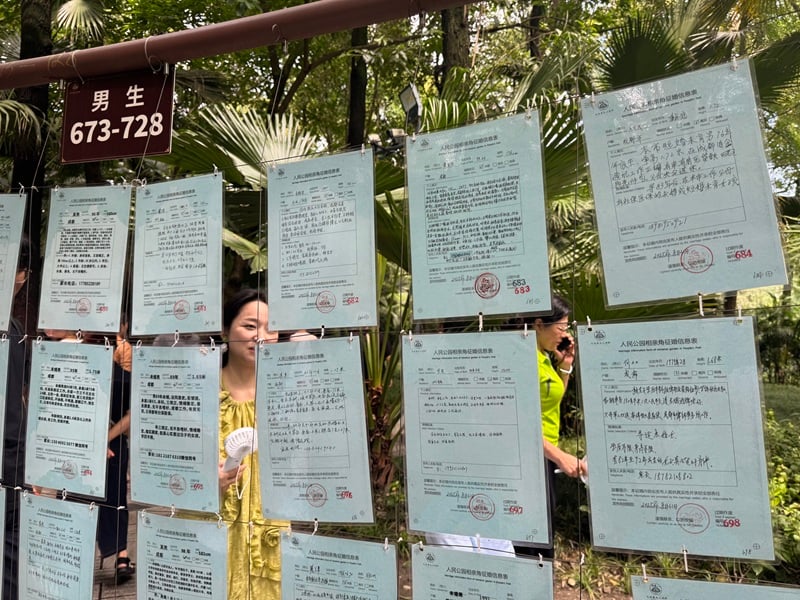
As we all wandered around the park, we looked at all these posters with our Chengdu classmates, who helped us translate the posters and their meanings. Getting lost in the park wasn’t hard to do, given how many activities there were and how many places there were to see. A few of my classmates and I ended up dancing with a bunch of locals, a common form of exercise in China. We walked past many small stores and art stalls, taking pictures and buying souvenirs. To end off the afternoon, we enjoyed some chrysanthemum tea underneath the shade and joined our classmates at dinner.
Du Fu’s Cottage
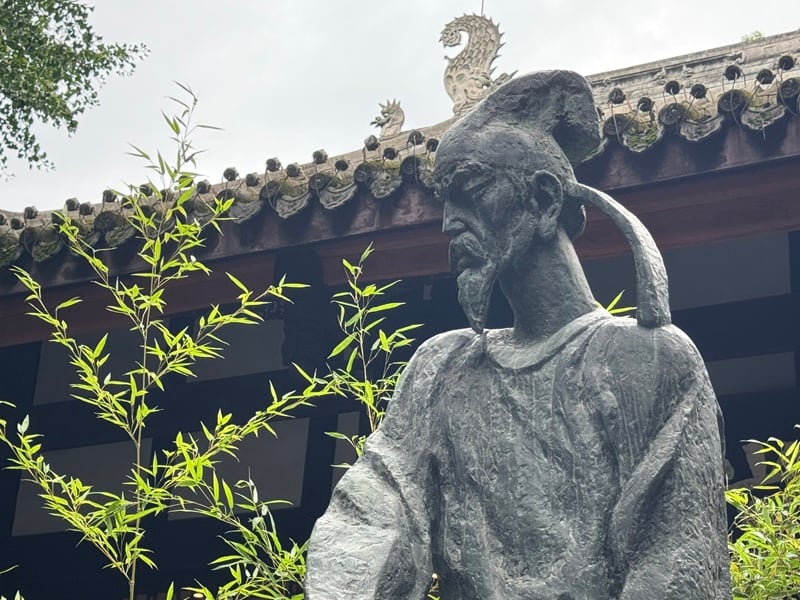
During our last full day in Chengdu, we first visited the home of famous Tang dynasty poet Du Fu, who wrote over 200 poems during the time that he lived in Chengdu. The cottage seemed small at first, but once we started walking, we quickly discovered the vast expanse of rooms, hallways, lakes, and gardens that lined the inside of the cottage.
On our tour, we learned about Du Fu’s relationship with other contemporary poets, such as Li Bai, as well as his reasons for arriving in Chengdu and building his cottage. By the end of the tour, we had the opportunity to watch a performance put on by CET students, who dressed up as Du Fu and Li Bai and recreated a conversation between the two in their skit. The students and their performance even attracted a crowd of locals who enjoyed the performance with us. As the second topic for our video presentation, we interviewed students about their opinions on Du Fu and his poems, all the while recording the surrounding scenery in all its natural beauty.
World Games Sports Experience
Afterwards, our last main activity was to participate in the World Games Sports Experience sponsored by the World Games in Chengdu. There, we watched performances ranging from breakdancing to traditional Chinese opera to ultimate frisbee. We played a series of games including drone sports, football, tai chi, archery, and pinch pot. But one of my favorite parts of this whole experience came afterwards—dragon boat racing!
My friends and I all piled into a traditional dragon boat and raced against a different group of classmates. One student at the front beat a drum to maintain the rhythm of our rowing, and we all followed along on our respective sides of the boat. As we were adjusting, we almost tipped the boat over a few times, but we quickly gained a remarkably fast speed, enough to beat our classmates twice! By the end of the day, we wound down by working on our video projects with our Chengdu classmates to present the next day.

The morning of our departure, we spent the last few hours with our classmates from Chengdu sharing our video presentations, enjoying lunch together, and reflecting on our time in the city. By the end of this trip, no one had wanted to return to Beijing, as we had already formed such a deep connection to the lifestyle of Chengdu. As tired as we were after the endless activities we explored, it was an incredible experience that fully allowed us to immerse ourselves in the culture and atmosphere.